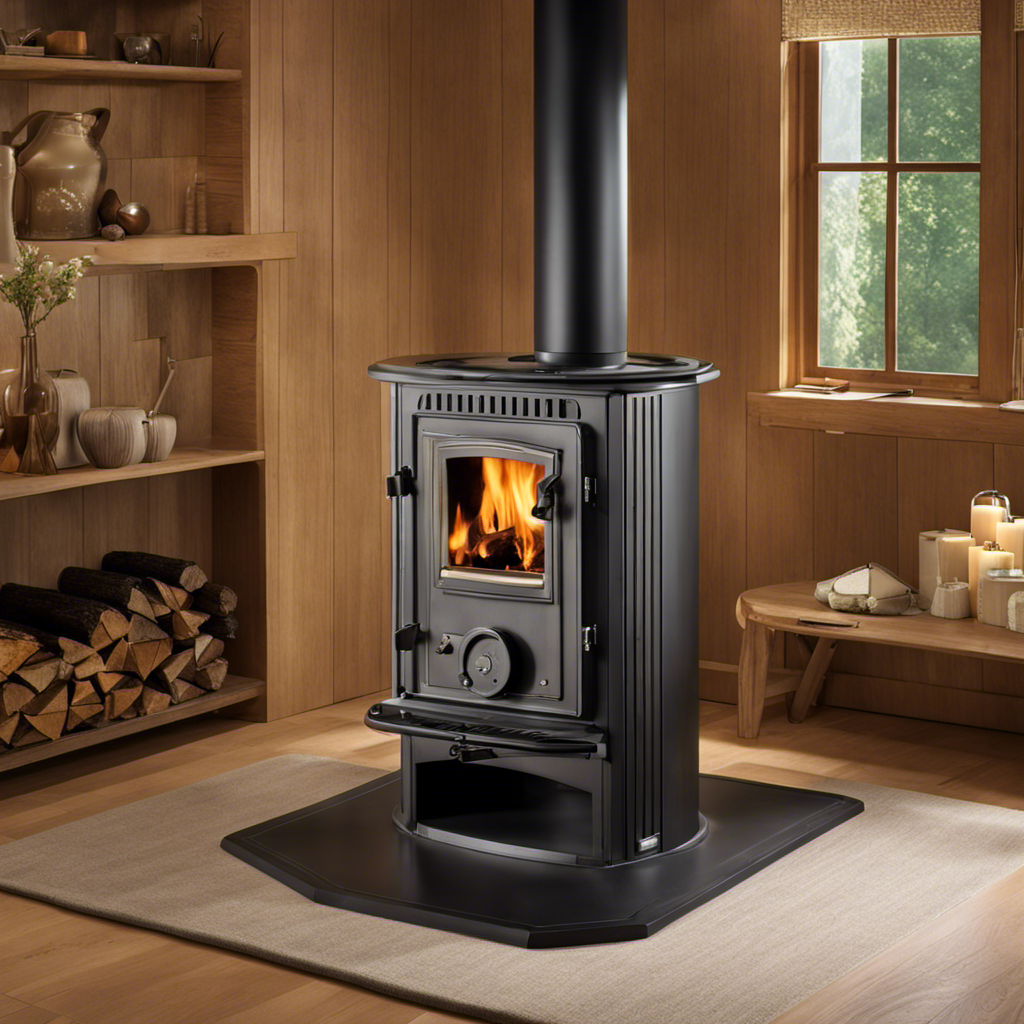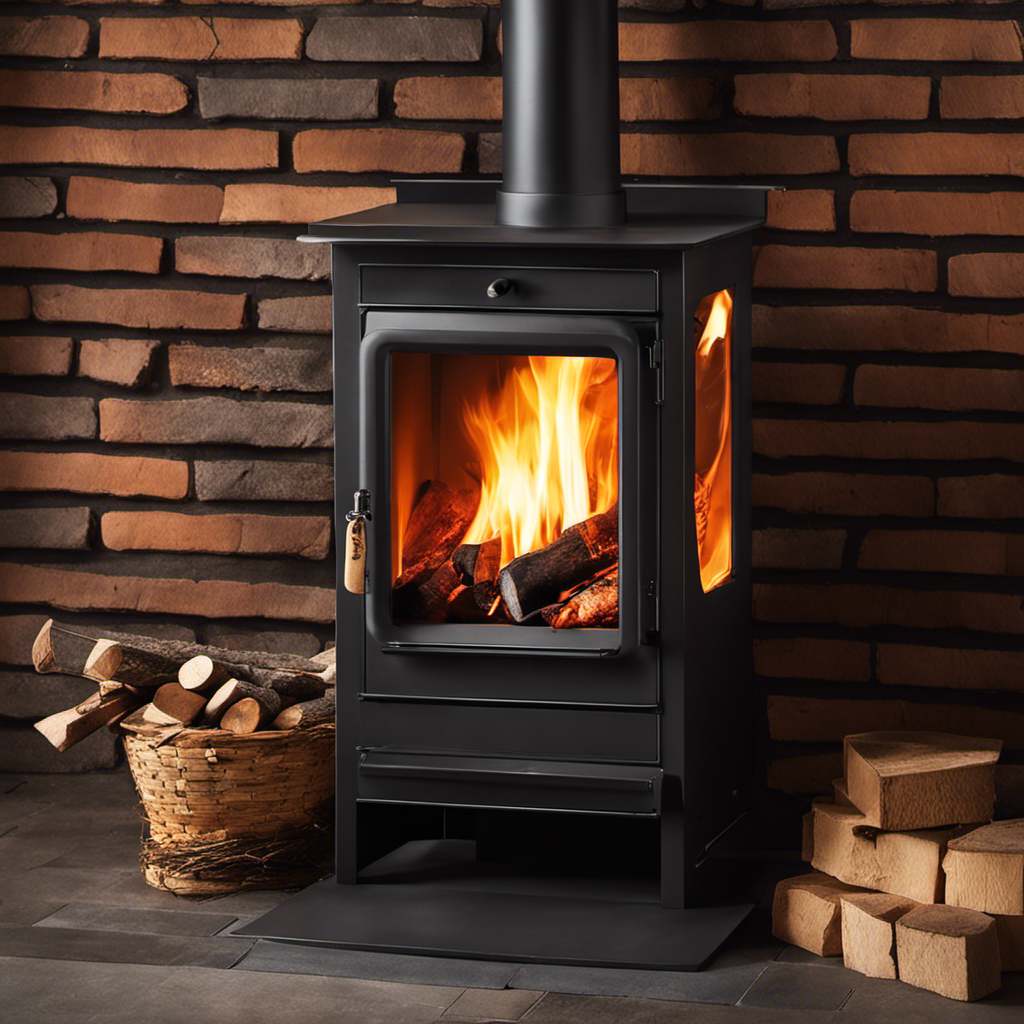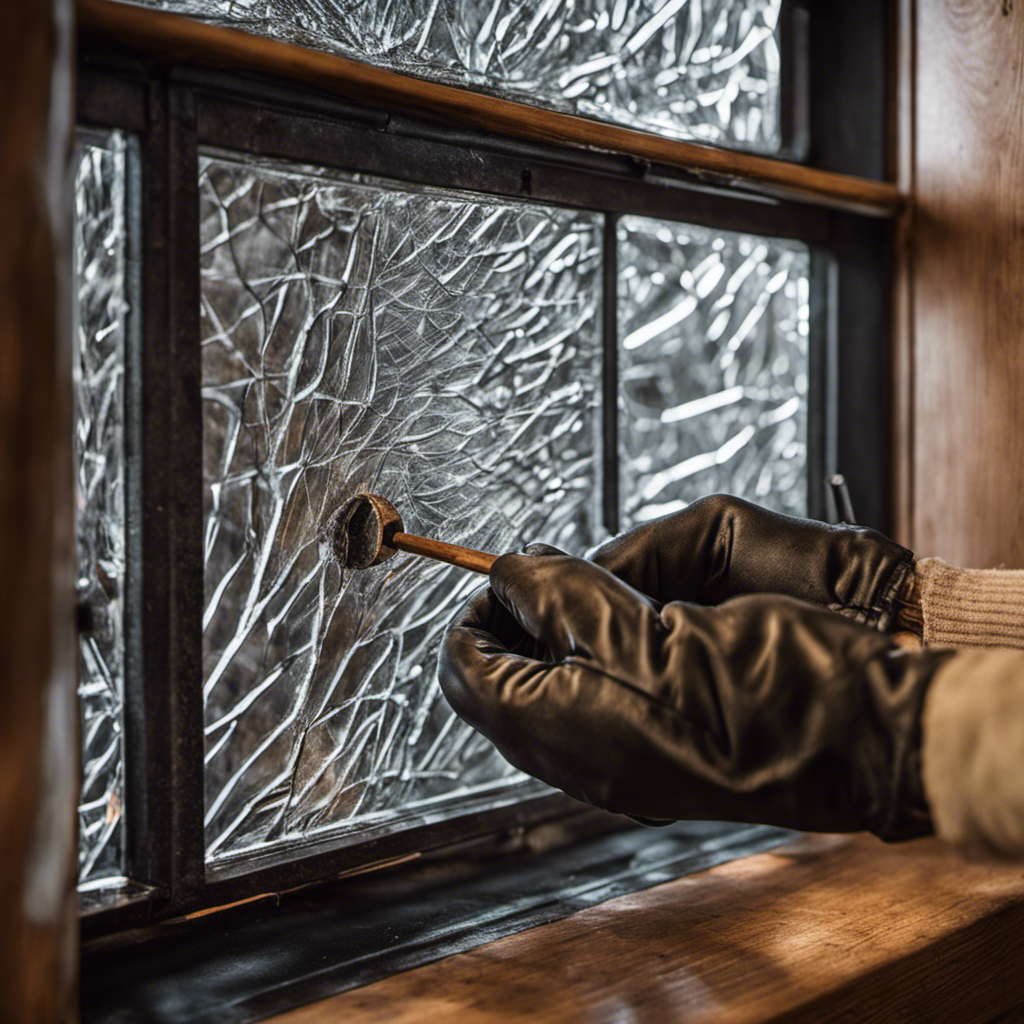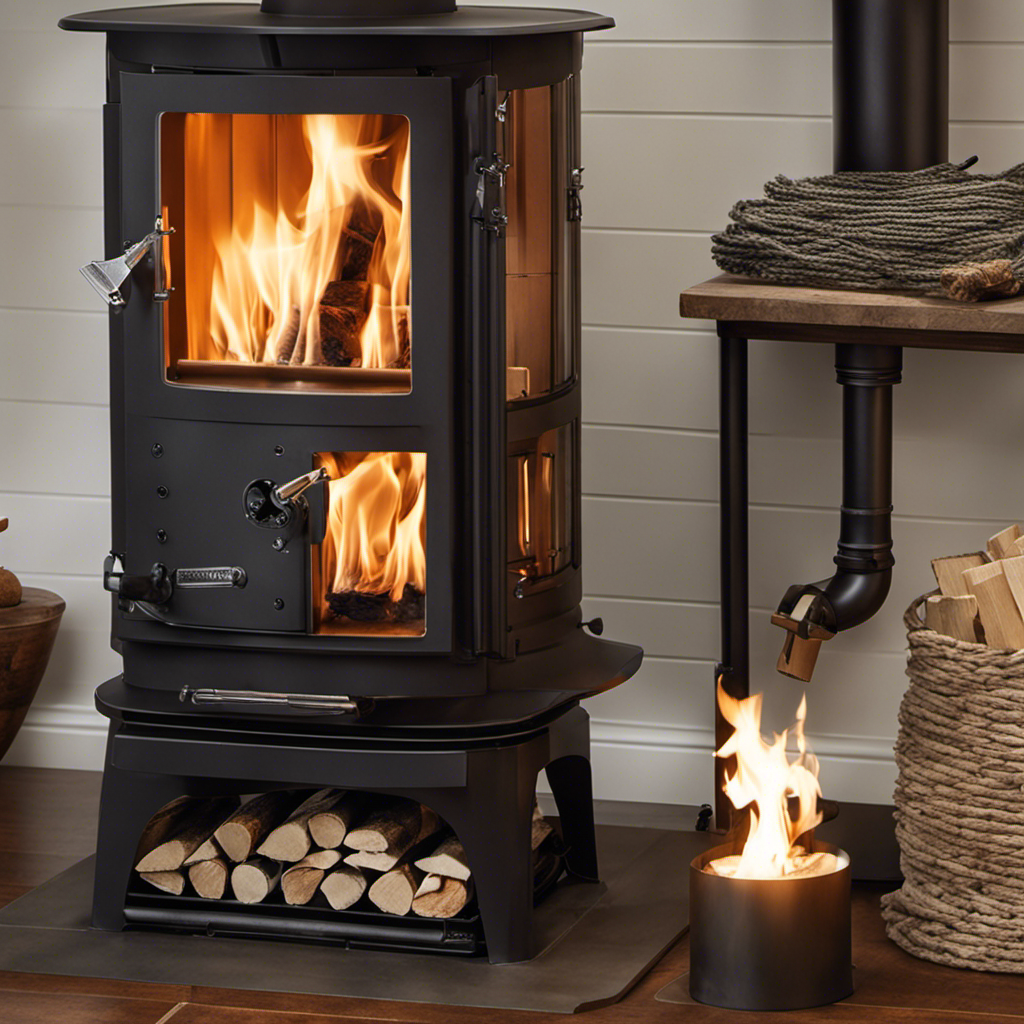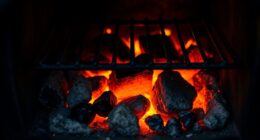As someone who is passionate about wood-burning stoves, I frequently catch myself pondering the function of a baffle and how it helps to improve the efficiency of my cherished device. What is its role? What advantages does it offer?
In this article, we’ll delve into the mechanics behind a wood stove baffle and explore its key advantages for improving efficiency. Whether you’re a seasoned wood stove user or considering getting one, understanding the importance of a baffle is essential for maximizing heat output and reducing emissions.
Let’s dive in and unravel this fascinating aspect of wood stove technology.
Key Takeaways
- A baffle redirects hot gases and smoke, allowing for complete combustion and increasing heat output.
- It creates a barrier for improved combustion, retains heat within the firebox, and maximizes heat output while minimizing fuel consumption.
- The baffle determines the wood stove’s efficiency, directs the flow of gases and air, and promotes complete combustion.
- When selecting a baffle for a wood stove, factors such as heat retention, durability, efficiency, and budget considerations should be taken into account.
The Purpose of a Baffle in a Wood Stove
I really appreciate how the baffle in a wood stove helps to increase the efficiency of the heating process.
The role of a baffle in wood stove design is crucial for optimizing the combustion process and reducing emissions.
The baffle is a heat-resistant barrier located inside the stove, typically made of steel or cast iron. Its purpose is to redirect the hot gases and smoke produced by the burning wood, forcing them to travel a longer path inside the stove.
By doing so, the baffle allows more time for complete combustion, resulting in higher heat output and improved fuel efficiency.
Additionally, the baffle plays a significant role in reducing emissions by minimizing the release of unburned particles and harmful gases into the atmosphere.
A well-designed baffle ensures that the wood stove operates more cleanly and efficiently, making it an essential component of the heating system.
How Does a Baffle Improve Wood Stove Efficiency
Using a baffle in a wood stove significantly increases its efficiency by maximizing heat output and minimizing fuel consumption. The design of the baffle plays a crucial role in enhancing the performance of the wood stove. Here are three key ways in which a well-designed baffle improves wood stove efficiency:
-
Improved Combustion: The baffle creates a barrier between the firebox and the flue, directing the hot gases and smoke towards the fire for more complete combustion. This ensures that more heat is generated from the wood, resulting in increased efficiency.
-
Heat Retention: The baffle helps to retain heat within the firebox by slowing down the escape of hot gases. This allows the stove to reach and maintain higher temperatures for longer periods, maximizing heat output.
-
Reduced Fuel Consumption: By facilitating better combustion and heat retention, a baffle helps to extract more energy from the wood, reducing the amount of fuel needed to heat the space.
Comparing the efficiency of wood stoves with and without baffles clearly demonstrates the significant impact that a well-designed baffle can have on wood stove performance. It’s an essential component for anyone seeking to optimize their wood stove’s efficiency.
The Mechanics Behind a Wood Stove Baffle
A well-designed baffle determines the efficiency of a wood stove, maximizing heat output and minimizing fuel consumption. Baffle design plays a crucial role in the overall performance of a wood stove. It’s responsible for directing the flow of gases and air within the stove, allowing for more efficient combustion and heat transfer.
The key to a successful baffle design lies in its ability to create a controlled airflow pattern. By strategically placing baffles in the stove, we can ensure that the hot gases are forced to travel a longer path, resulting in increased heat transfer to the surrounding environment.
Additionally, the baffle helps to retain heat within the combustion chamber, which promotes complete combustion and reduces the amount of unburned fuel escaping through the chimney. Therefore, understanding the role of airflow in maximizing the effectiveness of a wood stove baffle is essential for optimizing its performance.
Key Benefits of Using a Baffle in Your Wood Stove
The key benefits of having a baffle in my wood stove include improved heat distribution and reduced fuel consumption. The baffle is an essential component that plays a crucial role in improving combustion and reducing emissions.
Here are three specific ways in which a baffle enhances the performance of my wood stove:
-
Enhanced Heat Distribution: The presence of a baffle ensures that the hot gases produced during combustion are forced to travel longer within the stove, allowing for better heat transfer to the surrounding environment. This results in a more efficient and even distribution of heat throughout the room.
-
Reduced Fuel Consumption: By redirecting the hot gases towards the firebox, the baffle promotes a more complete combustion process. This means that the wood is burned more efficiently, resulting in reduced fuel consumption and increased burn time.
-
Improved Emissions Control: The baffle helps to create a longer and hotter gas pathway, facilitating the complete combustion of the wood. This, in turn, leads to a significant reduction in harmful emissions, such as particulate matter and carbon monoxide, ensuring a cleaner and healthier indoor environment.
Important Considerations When Choosing a Baffle for Your Wood Stove
I’ve been researching different options, but I’m not sure whether to go with a steel or ceramic baffle for my wood stove. Choosing the right baffle design is crucial for optimal wood stove performance. Factors such as heat retention, durability, and efficiency play a significant role in determining the best material for your baffle. To help you make an informed decision, I have created a table that compares the characteristics of steel and ceramic baffles:
| Material | Heat Retention | Durability | Efficiency |
|---|---|---|---|
| Steel | High | Moderate | Good |
| Ceramic | Very High | Excellent | Excellent |
As you can see, ceramic baffles have superior heat retention and durability compared to steel baffles. They also offer excellent efficiency. However, steel baffles are more cost-effective and still provide good performance. Ultimately, the choice between steel and ceramic baffles depends on your specific needs and budget. Consider these factors carefully before making a decision.
Frequently Asked Questions
How Often Should the Baffle in a Wood Stove Be Replaced?
I replace my wood stove baffle every few years to ensure optimal performance. Regular maintenance of the baffle is crucial for efficient burning and heat distribution. It helps control airflow, increases combustion efficiency, and reduces the risk of creosote buildup.
Can a Wood Stove Operate Efficiently Without a Baffle?
A wood stove operates efficiently with a baffle. It directs heat and smoke, increasing combustion efficiency and reducing emissions. Without a baffle, heat distribution becomes uneven, and the stove’s efficiency is compromised.
What Materials Are Commonly Used to Make Baffles for Wood Stoves?
Materials commonly used in the construction of wood stove baffles include steel, cast iron, and refractory materials like firebricks. These materials are chosen for their heat resistance and ability to redirect and control the flow of gases for efficient combustion.
Are There Any Disadvantages or Drawbacks to Using a Baffle in a Wood Stove?
There are some drawbacks to using a baffle in a wood stove. It can restrict airflow, reducing combustion efficiency. Alternatives to using a baffle include using a secondary combustion system or a catalytic converter.
Can a Baffle Be Added to an Existing Wood Stove, or Does It Need to Be Installed During the Initial Construction?
Sure, you can totally add a baffle to an existing wood stove. It helps improve efficiency by directing heat and gases, preventing smoke from escaping, and reducing creosote buildup. It’s a worthwhile upgrade.
Conclusion
In conclusion, a baffle in a wood stove acts as a crucial component that enhances the efficiency and functionality of the stove.
It works like a conductor, directing and controlling the flow of heat and smoke inside the stove, allowing for a more complete combustion process.
Similar to how a conductor guides an orchestra, the baffle effectively orchestrates the heat distribution, resulting in a more efficient and enjoyable wood burning experience.
Logan’s affair with adventure began in childhood. He hailed from a small town where vast forests bordered one side and endless shores stretched on the other. His days were spent exploring uncharted woods, climbing tall trees, or listening to the tales of old sailors. This early immersion in a world brimming with stories and mysteries became the foundation of his passion for writing.

